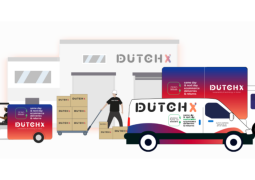What is the AIDA Model? How to Use It?
by 25/04/2022 16:140

Ever since functional capitalism was adopted as the major economic and political system across the developed world, businesses have been booming for a lot of people. With the “American Dream” being pushed aggressively in the West, people were inclined to get into the business themselves. In the late 20th century, most of the world was running on liberalized economies and global trade. Naturally, theorists and academics had to offer their views on business. Names like Philip Kotler, Jim Collins, and Josh Kaufman laid out some game-changing business theories, models, and tools. One such model in the field of marketing was the AIDA model. It was a marketing model developed to make advertisement efforts more effective and efficient.
What is the AIDA Model?
AIDA stands for Awareness/Attention, Interest, Desire, and Action. It’s a model that was developed from the perspective of the customer. It maps the journey of a consumer’s buying decision from its conception to execution. Each and every element of this model is vital for a successful sale.
Attention/Awareness
No matter how revolutionary your product or service is, it will not take off in the market unless and until the consumers are aware of its existence. That’s where advertising comes in. If you don’t have a big budget and are looking to target a particular clientele in a particular locality, guerilla marketing will be the best choice. Guerilla marketing involves promotional methods, techniques, and tools that are unconventional as well as cheap. These involve publicity stunts, aggressive word-to-mouth publicity, disruptive advertising, etc. Any form of advertising or marketing that is unorthodox, doesn’t cost much, and is in-your-face in its approach can be classified as guerilla marketing.
Interest
Once the customer is aware of a product or service’s existence, the next step is to gauge their interest. This can be done by highlighting the unique selling points of a brand/product/service. The idea here is to set your brand or product/service apart from the competition. The features that will set you apart from your competition will become your biggest selling points. Most brands try to tell a story to have their target audience interested in their product. Nike, for instance, has dedicated its brand persona to personal development and motivation. To solidify this image, they routinely collaborate with superstar athletes like Cristiano Ronaldo, LeBron James, Maria Sharapova, Rafael Nadal, etc. The enriching depth that Nike’s campaigns and marketing efforts have added to the brand’s personality makes it popular among its customers. By captivating the attention of the audience, they install a spectacular image of their brand and products in their minds.
Desire
So you have established your brand in the market and have gauged the interest of your target clientele. The next step is to make your customers go from “I like it” to “I need it.” To get to this part, a business has to identify the pain points of its target customers and provide a solution. Very few brands become successful without establishing a dependency on their product in the market. For instance, Ola and Uber identified the pain points of the middle-class working individuals in the metro cities of India. This demographic couldn’t afford private vehicles, and the local taxis took a toll on their limited budgets. That’s where Ola and Uber, with their standardized and affordable commute prices, came into play. Another way to go from the “interest” stage to the “desire” stage is to provide the consumer with something so unique that no other player in the market can compete. Apple is an apt example of this, as they promise to deliver abstract values in the guise of their products. They do not sell electronics but tailored experiences that spell creativity, innovation, and ease of access to their consumers.
Action
The final step in the AIDA model is action. In this final stage, everything becomes about the purchase. The major question to be asked is, “How can a business increase the chances of converting a potential lead?” Tactics such as special discounts, multiple modes of payments, special loans, enhanced user experience during the purchase are all part of this final stage in the AIDA model. Human attention is a fickle thing, and one can easily lose out on sales due to logistical and technological issues that hamper the purchase experience. For instance, if your website only accepts credit card payments, you might lose out on the lower-middle class demographic who do not have access to credit cards. In this final stage of the model, details are the name of the game. If you’ve optimized and streamlined the user experience from purchase to delivery, the sales numbers will automatically go up.
Application of the AIDA Model
Once you’ve got the gist of the AIDA model, its application becomes far easier. The first step is to establish your brand or product’s presence by engaging in aggressive marketing campaigns. If you have the budget, you can always expand your marketing efforts. However, they should be concentrated. A few thousand dollars spent on targeting a particular demographic may yield far more results than spending half a million on vague marketing. To properly implement the AIDA model in your marketing campaigns, you will need to do extensive preliminary research. Without data, your marketing efforts will lack a sense of direction. For this, you can even outsource the whole marketing process to external marketing firms that will provide you with an influencer marketplacelike Ainfluencer support, behavioral analyticsplatforms like WatchThemLive data, and visitor tracking software/tools. Above all, one must remember that the AIDA model can only be a part of a successful full-fledged marketing campaign. It isn’t a single solution to all the woes of a marketer.



